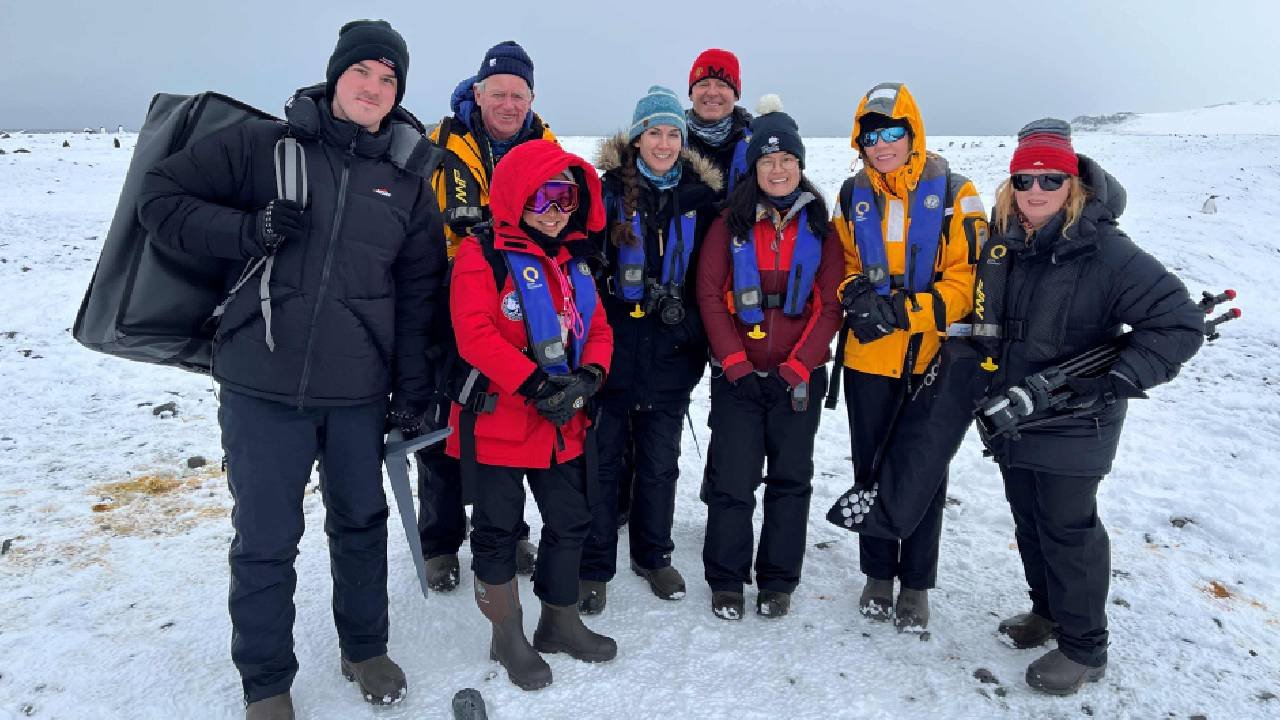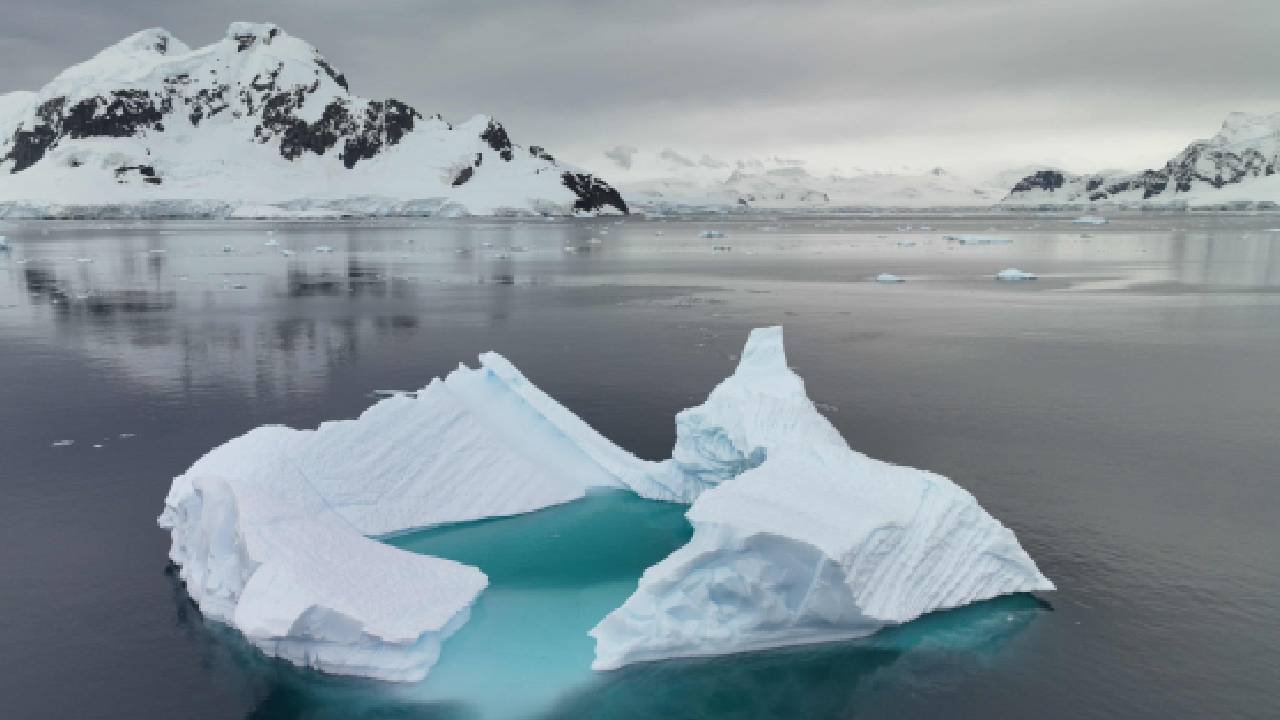Ever since I’ve known Liz Courtney, she has been a passionate citizen of the planet and storyteller. Thirteen years ago, she swapped her high heels for snow boots. Now, she is putting her experience and forward thinking vision to to lead the narrative on social change in the climate sector.
Here, Liz shares the story behind her upcoming documentary Antarctica – The Giant Awakens.
And, Women Love Tech is proud to be the media partner for the documentary premiere on the week of International Women’s Week at the Orpheum Theatre in Cremorne, Sydney on March 6, 2024. We will also be conducting a panel discussions with Liz Courtney, and two leading scientists Taronga Conservation Society Manager of Conservation Dr Justine O’ Brien and winner of the 2023 Hatch Accelerator Programme Dr Alex Carthey, Founder of ReHabitat. And we are inviting our community from Women Love Tech to join us. You can buy tickets here: https://www.orpheum.com.au/movie/antarctica-the-giant-awakens
But first, here Liz shares the story behind her latest documentary and why the Antarctica has become pivotal in her own transformative experience moving from the corporate world to becoming an award winning conservation documentary-maker.

Can you share how your first expedition to Antarctica in 2010, particularly directing “Cool School Antarctica,” became a pivotal moment in your life, steering you toward science communication and storytelling about the planet’s Tipping Points and out of corporate life?
Absolutely, my first trip to Antarctica in 2010 was a transformative experience. I took a group of 40 teenagers to film the first youth climate conference led by Prof Robert Swan the first man to walk to the north and south poles. Unfurling the First Nations Flag with two indigenous youth on the expedition, Narelle Long and Malcolm Lynch, marked a proud moment and there was not a dry eye in the crew.
I was struck by the passion of these young people from diverse nations wanting to tell their stories and asking questions about my generations lack of action, which ignited my commitment to drive more awareness and education. Antarctica became a turning point, pushing me to choose a path of making a difference through science communication and storytelling, which led me to write and direct the global series The Tipping Points of climate change, with over 30 lead scientists around the world. On the way home, the Drake Passage lived up to its reputation and I thought I was going to meet a watery fate when we hit a very bad hurricane, and I was never so happy to stand on land again!
Antarctica did change me. I found myself at a sliding door moment in my life, back to corporate or into science communication and storytelling? Now 13 years forward, and some 55 documentaries under my slate, I found myself heading back to Antarctica with the Earth Observatory of Singapore, where I have been Artist in Residence, alongside Prof Benjamin Horton, Director of the Earth Observatory of Singapore, a leading sea-level expert in the region and two female scientists Fangyi Tan and Jennifer Walker who were planning the first microbe air sampling along the west Antarctica Peninsula.
Was your recent expedition to Antarctica smooth sailing, or did you encounter challenges similar to your first journey, especially with the added complexity of attempting the first live-television cross from Antarctica?
Describing it as smooth sailing would be an understatement! Eager for challenges, I aimed to achieve the first live-television cross from Antarctica, inspired by an Australian base’s Christmas celebration in 2022 and the joy of downloading Netflix via their newly installed Starlink system. Navigating a Lithium battery dilemma, my son’s expertise in Physics helped create a parallel system, securing Starlink’s support and providing us with live broadcast options from the west Antarctic Peninsula.
Lost equipment, a midnight dash to collect items on the last flight in, intensified the final 6 hours preparations before flying into Antarctica. Landing brought overwhelming emotions, realizing the unexpected return to the place of a life-altering moment. Despite a stranded ending due to snow and a broken anchor due to extreme high winds and snow storm, the expedition’s success, coupled with the achievement of the first live television cross with CNA, highlighted Antarctica’s impact on low-lying regions, a significant accomplishment led by Prof Benjamin Horton and the dedicated science research team, and my crew.

Can you delve into the behind-the-scenes challenges of planning an expedition to Antarctica, especially in terms of scheduling production, considering unpredictable weather conditions that could potentially disrupt filming?
Planning for this expedition required precision due to limited filming days and the unpredictable Antarctic weather. Communication challenges with the expedition director who was already in Antarctica added further complexity as he only had 24-hour windows for e-mails and satellite phone calls. Sequences were carefully planned on palm cards, considering shooting locations, weather, and equipment limitations. With shoot schedules tailored to zodiac travel and daily post-file management, the entire production planning took me over 80 hours. Also, the allowance of post file management at the end of the day required, all file cards to be down loaded, spot checked by myself and the director of photography, and then 3 sets/copies made on three separate drives, which would in the end travel back with three different team members to ensure safety of the masters.
Why is the narrative of “Antarctica – The Giant Awakens” such a crucial story to tell, particularly with the focus on the potential impact on sea-level rise this century across Oceania, and south-east Asia.
Antarctica, the coldest and driest continent on Earth, may seem a world away from the tropical paradise of Southeast Asia, the east coast of Australia or islands across Oceania, however the Antarctic Ice sheet 12,000 kms away is starting to rapidly change and climate scientists are concerned.
The scale of these massive icesheets is just so big. What is happening out of sight is shaping up to be the biggest existential threat to southeast Asia and to the world that could see, global sea levels rise by 3 meters, impacting millions in low-lying areas, 80% of which are across southeast Asia.
Climate scientists are concerned that Antarctica is approaching a tipping point, where glaciers rapid retreat, could risk the destabilization of the West Antarctic Peninsula and all eyes are on the Thwaites Glacier and Pine Island. The biggest threat to sea level rise globally is Antarctica, and through this documentary we explore the impact of warming oceans, the change of winds and atmospheric layers, instability on the climate system and the impact this is having on all elements of life in Antarctica.
With one of the world’s preeminent sea level scientists, and two emerging female scientists, the story aims to inspire the next generation of girls and women to engage in science research in the field, and raise awareness about the potential consequences of the Antarctic ice sheet destabilization, emphasizing the urgent need for global action – because a melting ice causes a rise in sea level and low-lying nations across the global will be flooded. Has the Giant Awakened or were we asleep?
Magnificent drone imagery, breathtaking scenic mountains, humpback whales, and a plethora of wildlife add brilliance to the exploration of science research undertaken on this expedition. And two young emerging scientists fuel us with their passion for change and action in their lifetime and for future generations.





